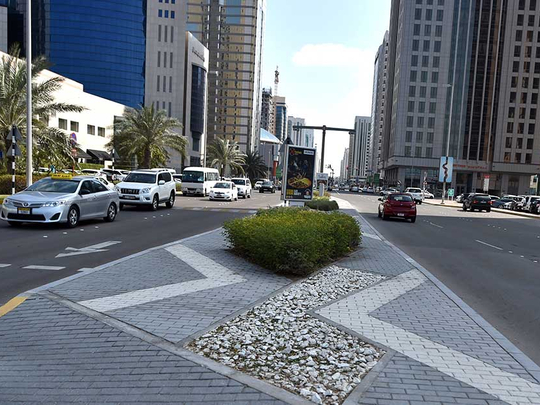
Abu Dhabi: Treated wastewater currently makes up 76 per cent of the water used for landscaping purposes in the capital, and municipal authorities hope to increase this to 100 per cent by 2030, top officials said in the capital last month.
In fact, this gradual scaling up will be obvious even in 2018 when the proportion of treated wastewater used in landscaping will increase to 80 per cent, and then increase further to 85 per cent by 2020, said Hussain Al Saeedi, head of standards and studies at the Municipality of Abu Dhabi City.
“Water is a precious resource, and one of our main aims as we look at making the city greener is reducing the amount of potable and desalinated water used. The main challenge in this is the development of infrastructure that can deliver the wastewater to the required locations,” Al Saeedi told Gulf News.
“Other than this, we are also looking at ways to reduce the amount of water that is required. So instead of using water-intensive plants and grass, landscaping in Abu Dhabi now involves the use of native plants that grow equally well in our arid environment,” he added.
Al Saeedi was speaking on the sidelines of the Future Landscaping and Public Realm conference, which saw industry experts meet with government officials and urban planners to discuss how to make the city more liveable and sustainable.
The municipality has already commenced a number of projects to transform public spaces so that water can be better conserved.
For example, 83 per cent of the grassy areas along Fatima Bint Mubarak Street have been replaced with cleverly designed hard landscaping that includes the use of pebbles and native plants, Dr Ammar Jarrar, irrigation expert at the municipality.
“In the past, about 12.5 litres of water were used per day to irrigate each square metre along the street. This has been reduced to just 1.6 litres. We’ve undertaken similar redesign projects at many public parks as well, and ensure that all new public spaces and parks do not have water-intensive landscaping,” Dr Jarrar said.
Al Khatem park that previously required 10 litres of water per square metre each day is irrigated using just four litres now. Newer or refurbished streets are also landscaped to use less than two litres each day per square metre.
“Water-intensive streetscapes were not just costly to irrigate but also difficult to maintain. The new focus on using hard-scapes and native plants helps reduce this cost, while also lending different textures. It is not just about greening the desert any more, but about ensuring sustainability while developing green spaces,” said Benjamin Heydon, landscape expert at the municipality.
Speakers at the conference also highlighted the need for making the public realm appealing, citing studies that found hospitalised patients needed 20 per cent less light through windows that overlook green spaces.
To that end, the municipality is also on the lookout for unused land and remnant spaces that can be turned into areas for relaxation and leisure.












